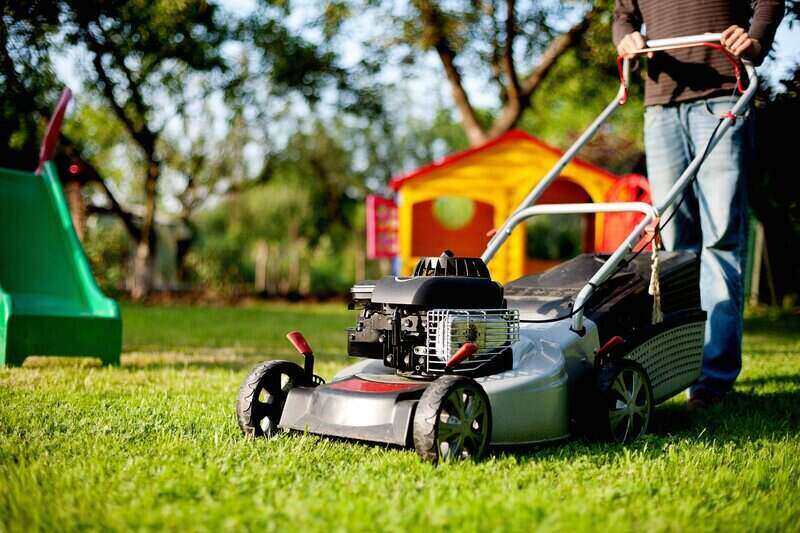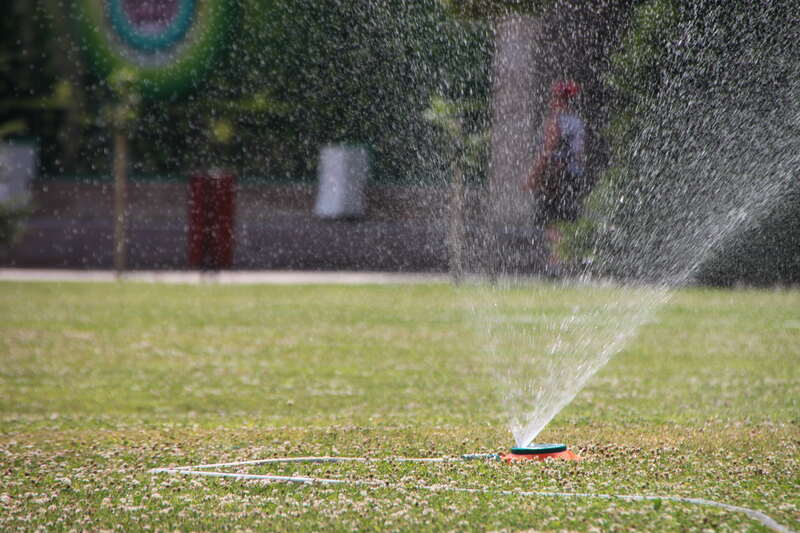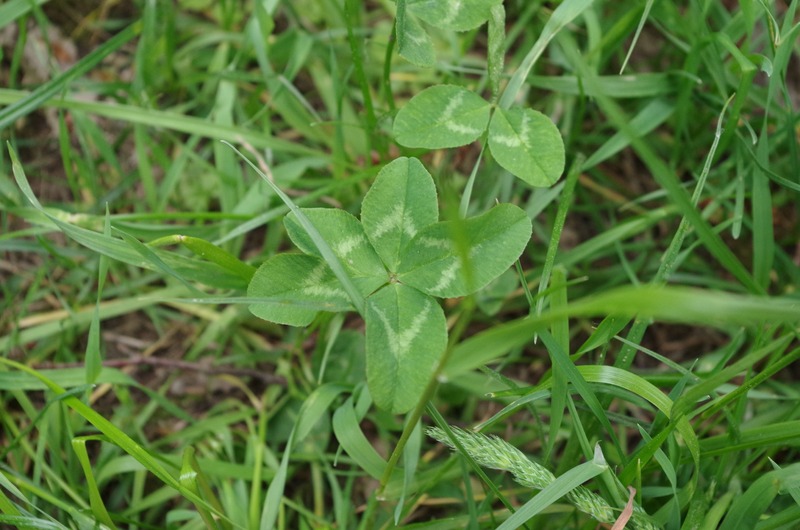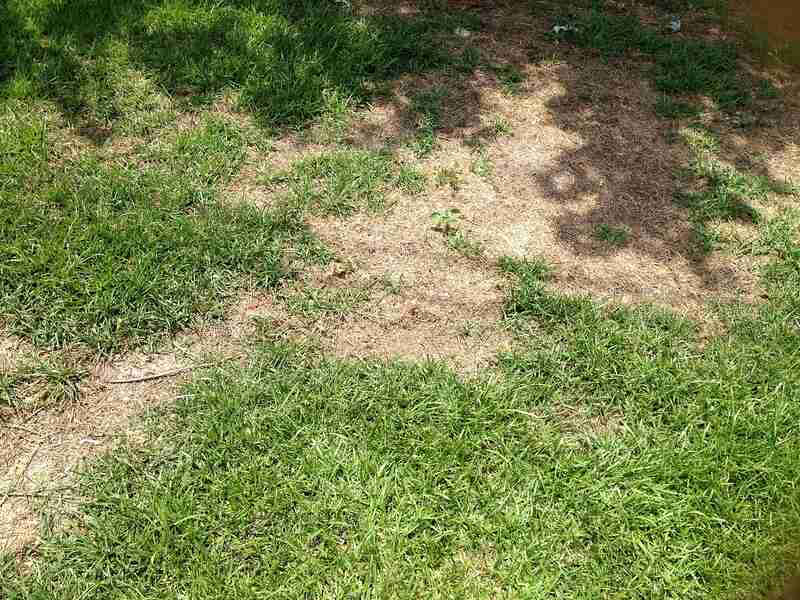Guide to Summer Lawn Care in Tampa, FL
BY DANIELLE GORSKI | JULY 31ST, 2019 | FLORIDA, LAWN CARE, TAMPAFlorida isn’t called the Sunshine State for nothing, and the city of Tampa boasts an impressive average of 244 sunny days a year. With all that sun, Tampa has many days with no rain. High summer temperatures average 90 degrees Fahrenheit and the hot, humid conditions invite pests and diseases right to your lawn. With all that working against it, use this guide to summer lawn care in Tampa to give your lawn the extra TLC it needs during the summer season.
In this article, we’ll cover:
- Don’t Mow Too Much
- Sharpen the Mower Blades
- Leave Grass Clippings on the Lawn
- Water Grass in the Morning
- Fertilize Wisely
- Control Weeds
- Treat Pests
- Treat Diseases
What Makes Summer Lawn Care Important in Tampa?
The Tampa Bay area enjoys a mild climate year-round, as the coastal city has an average annual temperature of 73.1 degrees Fahrenheit. Tampa’s hottest months are May through September.
In the summertime, your lawn needs more care and attention than in the winter months when it’s dormant. During the heat and humidity of summer, your lawn may wither and die if it doesn’t get proper care. It’s important that your grass gets sufficient mowing, watering, and fertilizing, since a thriving grass is better protected against pests and diseases.
Additionally, Tampa is hurricane territory, and keeping a well-maintained yard can help with drainage during rough weather, making your yard safer and hurricane-resistant.
8 Tips for Summer Lawn Care in Tampa
1. Don’t Mow Too Much

Photo Credit: Pixabay
The general rule is that you should cut no more than one-third of the grass blade when mowing your yard. It is recommended that homeowners mow their lawns once every one to two weeks, depending on the grass type.
As grass grows taller, its root growth improves, so it’s a good idea to raise the mowing height of your mower as your grass grows during the summer. If your lawn is brown after you mow it, it means you’ve cut your grass too short.
Cutting your grass extra short may seem like a clever shortcut to mowing less frequently, but it won’t help your lawn’s health. When your lawn is cut too short, it is more prone to diseases and weed infestations. In the end, mowing the grass too short may increase the amount of work to keep it healthy.
| Grass Type | Recommended Mowing Height | Mowing Frequency |
| Bahiagrass | 3-4 inches | 1-2 times a week |
| Bermudagrass | 1-2 inches | Every 7-10 days |
| Buffalograss | 2-3 inches | Every 7-10 days |
| Centipedegrass | 1.5 to 2 inches | Mow weekly |
| St. Augustinegrass: Standard cultivar | 3-4 inches | Every 7-10 days |
| St. Augustinegrass: Dwarf cultivars | 2.5 to 3 inches | Every 7-10 days |
| Zoysiagrass | 1 to 2.5 inches | Mow weekly |
2. Sharpen the Mower Blades
Before summer starts, have your lawnmower’s blades sharpened. This will ensure you get an even cut and avoid jagged, poorly cut grass. Sharpening mower blades helps your lawn stay healthier, as poorly cut grass is susceptible to diseases.
Grass that looks ragged, brown, or uneven after being freshly mowed is a sign of dull lawn mower blades. Usually dull mower blades make your cut grass look like it has been torn instead of neatly sliced.
To sharpen your lawn mower’s blade, follow these steps:
- Disconnect the mower’s power source. It is dangerous to work with lawnmower blades while the mower is still connected to a power source. Before you work on your lawn mower, disconnect the power source. For electric lawnmowers, this means removing the battery or making sure the mower is unplugged. For gasoline mowers, make sure to unscrew the spark plug to disconnect it from the cables.
- Turn the mower on its side so you can access the mower blades.
- Remove the blade. Never sharpen a blade while it is still attached to the lawnmower.
- Inspect your blade to determine how much sharpening it needs. The age and the amount of wear of the blade determines how much sharpening it needs.
- Sharpen the blade. Newer blades that don’t have much wear and tear suffice with only a few passes with a sharpening stone or hand file to get them sharp again. A more severely blunted blade needs a more intense sharpening job with a bench grinder or an angle grinder.
- Put the blade back in the lawn mower.
It’s good practice to inspect your lawnmower’s blades after every mow. Inspect them for wear, dents, cracks, or nicks.
3. Leave Grass Clippings on the Lawn
Leaving a thin layer of grass clippings spread over the grass can increase your lawn’s health. Known as grasscycling, grass clippings left on your lawn decompose and feed nutrients back into your soil, acting like a kind of fertilizer.
Just make sure that you don’t get carried away. Too many clippings on the lawn is bad for your yard and can cause diseases, which is not an outcome you want.
Grass clippings should never be thicker than a couple of inches deep, otherwise they will create thatch. Thatch is formed from a collection of organic material such as dead grass, roots, stems, and leaves. Thatch deprives the ground underneath of oxygen and nutrients, resulting in an unhealthy lawn.
Grass clippings can also be used for compost or for mulch in your flower beds. Simply bag the grass clippings when you mow and then spread a layer of the clippings over your plant bed.
4. Water Grass in the Morning

Photo Credit: Wallpaper Flare
Regular watering encourages your lawn and landscaping to stay happy and healthy. Typically, a lawn in Tampa requires approximately 1 inch of water a week and should be mowed two to three times a week. Grass might need more water during droughts or particularly hot summers.
The amount of watering your lawn needs depends on several factors:
- Type of grass
- Amount of shade
- Time of year
- Soil type
Before you plan a watering schedule, check local laws in case there are city watering restrictions on how long or at what times you can run your sprinkler system. The government may have water conservation measures in place, so it’s your responsibility to follow these regulations.
- Don’t overwater, as that can invite pests and diseases.
- Avoid watering late in the evening, since water won’t have time to evaporate before dark. Water left sitting on your lawn all night could result in fungal growth.
- Water your lawn in the early morning (before 10 a.m.) when it won’t evaporate too quickly but it won’t sit on your grass for hours.
- Folded grass blades are a sign that your lawn needs watered.
- If there’s a lot of rain during the week, you probably don’t need to water at all. The recommended 1 inch of water a week includes rainfall..
It’s better to water deeply and less frequently than to give your lawn a quick, shallow sprinkle more often. Deep waterings help your grass grow deeper roots.
Bahiagrass
Bahiagrass is a drought-tolerant cultivar that can endure going without water for extended periods of time. However, all grass needs some water eventually, so bahiagrass should be watered with .5 to .75 inches of water at a time.
Bermudagrass
Bermudagrass is a great choice for a low-maintenance lawn because it is incredibly drought-tolerant and requires less watering than other types of warm-season grasses. Water bermudagrass twice a week for a total of 1.25 inches of water each week.
If you have automatic pop-up sprinkler heads, a watering session should take about 15 minutes. For rotary sprinkler heads, watering should take about 35 minutes long to water.
Buffalograss
Buffalograss doesn’t require much water, so be careful to only water their buffalograss lawn when it needs it.
Water buffalograss twice a week for a total of 1 inch of water a week. Each zone should be watered for 15 minutes with pop-up sprinkler heads, and 30 minutes for rotary sprinkler heads.
Centipedegrass
Although centipedegrass isn’t the best for dealing with foot traffic, it doesn’t require much maintenance. Centipedegrass generally requires more water than other types of grass, usually needing about 1.25 inches of water per week.
Homeowners should water centipedegrass twice a week in the morning before 9 a.m. Each zone should be watered for 15 minutes with pop-up sprinkler heads, and 35 minutes for rotary sprinkler heads.
St. Augustinegrass
St. Augustinegrass needs 1 inch of water every week, split into two separate watering sessions. Each zone should be watered for 15 minutes with pop-up sprinkler heads, and 30 minutes for rotary sprinkler heads.
Zoysiagrass
Zoysiagrass performs best in well-drained soil, so don’t overdo it with watering. Typically, Zoysiagrass needs 1 inch of water a week. Each zone should be watered for 15 minutes with pop-up sprinkler heads, and 30-minute sessions for rotary sprinkler heads.
5. Fertilize Wisely
Fertilizing encourages healthy lawn growth. It’s best to use a slow-release fertilizer to keep your lawn fed over several weeks. Fertilizer feeds your lawn with nutrients, reduces the amount of weeds in your lawn, and increases the strength of plants.
- Fertilizing schedules depend on the type of grass and the growing zone your yard is in, which for Tampa is USDA hardiness zones 9b and 10a.
- Fertilize only when your lawn is actively growing. Don’t fertilize dormant grass.
- Don’t fertilize before it rains, otherwise the rain will wash away the fertilizer before grass roots get a chance to absorb the nutrients.
- Florida’s soil is naturally rich in phosphorus, so there’s no need to add phosphorus to supplement your lawn’s growth.
- When selecting fertilizer for your grass, consider the NPK ratio, which stands for nitrogen (N), phosphorus (P), and potassium (K), as these three nutrients are essential for your grass. The NPK ratio should tell the percentage ratio of each nutrient. A soil test will help you determine what NPK your lawn needs.
Bahiagrass
Bahiagrass needs to be fertilized twice a year. The first application of fertilizer should be applied in April. No more than 0.7 pounds of nitrogen per 1,000 square feet should ever be applied at a time..
Bermudagrass
During the summer growing season, bermudagrass needs a monthly application of 0.5 to 1 pound of nitrogen per 1,000 square feet.
Expect to fertilize bermudagrass about 2 to 6 times from spring to fall, its peak growing season. Stop fertilizing once the season cools down and the grass goes dormant for winter.
Buffalograss
Just like buffalograss doesn’t require much watering, it doesn’t require much fertilization either. Buffalograss is a hardy grass that can perform well without a lot of maintenance. A North American native, most homeowners don’t fertilize buffalograss at all.
Centipedegrass
Apply 1 pound of nitrogen-based fertilizer per 1,000 square feet once in June and again in September. Over the year, your lawn should get a grand total of 1-2 pounds of fertilizer per 1,000 square feet.
St. Augustinegrass
St. Augustinegrass is another type of grass that requires regular fertilization. Each year, a total of 2 to 5 pounds of nitrogen per 1,000 square feet should be applied to your lawn. Each application should amount to 0.5 to 1 pound of nitrogen for 1,000 square feet of lawn.
Zoysiagrass
Zoysiagrass doesn’t need much nitrogen, and likewise doesn’t require a lot of fertilization over the year. Each year, zoysiagrass needs a total sum of about 1-3 pounds of nitrogen per 1,000 square feet of lawn.
6. Control Weeds

Photo Credit: PxHere
In Tampa, you want to spray pre-emergent herbicides on your lawn as early as February, before spring even arrives. Pre-emergent herbicides are chemicals you spray on your yard before weeds ever even have a chance to grow. If you missed that time frame, don’t sweat it. Weeds can be removed after they have sprouted up in your yard.
To eliminate weeds, remove them by hand or use chemical solutions such as post-emergent herbicides. Post-emergent herbicides are the type of herbicide that you spray on visible weeds that are already established in your yard.
- Spray pre-emergent herbicides before weeds start appearing in your lawn
- Use a garden trowel, screwdriver, or dandelion fork to pull up weeds
- When applying herbicides, apply sparingly so as to avoid scorching or harming your grass
Some of the most common weeds in Tampa include:
Chickweed: Chickweed has bright green oval-shaped leaves and tiny white flowers. The low-growing weed is an invasive plant. It is best to remove chickweed with herbicides or by hand removal.
Dandelions: Dandelions are characterized by sunny yellow flowers that transform into a white puffball of seeds. Each flower is supported by a long, hollow stem with jagged leaves growing at the base of the stem. It’s best to remove dandelions with post-emergent herbicides or by hand removal.
Goosegrass: Goosegrass forms a tangled web of grass blades and stems growing horizontally outward from a pale white center. Routine lawn maintenance and herbicides are a homeowner’s best defense against goosegrass.
7. Treat Pests
One of the best ways to prevent pests from invading your grass is good lawn maintenance. That way your lawn will stay healthy and capable of resisting pests. Unhealthy lawns suffering from drought or overwatering are susceptible to pest infestations.
- Spray preventative insecticides during the early spring when everything is starting to bloom.
- Watch out for browning or yellowing lawns, as it may be a sign of pests invading your lawn.
- For areas infected with chinch bugs or white grubs, It’s best to spot-treat them with a targeted non-repellent insecticide.
- Large chinch bug infestations in your yard should be treated with insecticides containing Bifenthrin, Neem oil, Cyfluthrin, Permethrin, or Lambda-cyhalothrin.
Here is a chart listing which pests are typically attracted to which type of warm-season lawn grass in Tampa:
| Types of Grass | Common Pests |
| Bahiagrass | Bahiagrass billbugsFall armywormsMole cricketsNematodes |
| Bermudagrass | Army wormsBillbugsMole cricketsSod webwormsWhite grubs |
| Buffalograss | Chinch bugsMealybugsMitesShort-tailed cricketsWebwormsWhite grubs |
| Centipedegrass | Ground pearlsGrubsLawn caterpillarsMole cricketsNematodesSod webworms |
| St. Augustinegrass | Army wormsChinch bugsCutwormsGrubsMole cricketsNematodesWebworms |
| Zoysiagrass | BillbugsChinch bugsMites Mole cricketsSod webwormsWhite grubs |
8. Treat Diseases

Photo Credit: Pixabay
Before summer hits, do a lawn inspection to check your lawn for signs of disease. Keep an eye out for diseases that are common in the Tampa Bay area such as gray leaf spot or root rot. Typically, good lawn care is the best way to prevent diseases from taking over your lawn, so it’s good practice to stay on top of taking care of your yard.
Bahiagrass
Dollar spot is a common malady that haunts bahiagrass. The best way to combat dollar spot is good lawn maintenance. A proper amount of fertilization should help bahiagrass remain strong and healthy enough to resist intruding diseases.
Bermudagrass
Bermudagrass has an impressive resistance to diseases, but some diseases that might afflict bermudagrass include:
- Dollar spot
- Large patch
- Leaf spot
- Sheath spot
- Spring dead spot
- Root decline
One of the best ways to prevent pests from invading your grass is good lawn maintenance. Spraying insecticides on infected areas is a good way to get rid of lawn pest infestations.
To protect bermudagrass from disease, apply pre-emergent herbicides during the spring when soil temperatures reach 55 degrees Fahrenheit.
Buffalograss
A hardy, tough grass, buffalograss has a high level of tolerance against diseases. However, even the most disease-resistant grass isn’t completely immune to all diseases. If your lawn is suffering from a disease, use broad-spectrum repellent-free pesticides to treat the affected areas of your buffalograss lawn.
Centipedegrass
Centipedegrass is an easy target for fungal diseases. One good way to prevent fungal problems is to avoid allowing water to sit on your lawn overnight. Centipedegrass decline or iron chlorosis are other maladies that might affect your centipedegrass lawn.
You should mow and water your lawn 24 hours before insecticide application. Treat affected areas with a broad-spectrum non-repellent insecticide that contains carbaryl or pyrethroid. Preventative yard treatments should be applied in May before the summer heat really kicks in. After the first application, a second follow-up application should be applied around June.
St. Augustinegrass
St. Augustinegrass may suffer from lawn diseases like gray leaf spot, large patch, or take-all root. Indoor-outdoor fungicides or plant disinfectants can be used to treat fungal diseases in your St. Augustinegrass lawns.
Zoysiagrass
Zoysiagrass has an impressive resistance to diseases, but there are a few possible diseases you should keep an eye out for:
- Brown patch
- Culvularia
- Gray leaf spot
- Large patch
- Root decline
- Rust
- Spring dead spot
- Take-all root
Fungal diseases are the most common ailment for zoysiagrass. To decrease the chances of a fungal disease becoming a problem in your yard, use fungicides on your lawn as a preventative measure.
FAQs About Summer Lawn Care in Tampa
Avoid watering your lawn in the afternoon, in the heat of the day. Also never water your lawn when temperatures have reached 95 degrees Fahrenheit or hotter.
The best time of day for watering the lawn is between 4 a.m. and 8 a.m.
Don’t fertilize your lawn in hot weather or during a drought. When your lawn is stressed from the heat, fertilizing it could end up doing more harm than good. Only fertilize your lawn while it is still growing; if your lawn has gone dormant from the heat, don’t fertilize it.
Longer grass blades shade the soil at their roots, which protects moisture from evaporating. As a result, longer grass retains moisture longer and doesn’t need to be watered as frequently.
Leave Tampa Summer Landscape Maintenance to a Pro
During the heat of summer you want to go cool off at the beach or in your backyard pool, not spend the day maintaining your lawn.
If you don’t want to deal with the hassle of lawn maintenance yourself, Wikilawn can help you find a Tampa lawn care pro today so you can focus on enjoying all Tampa has to offer.
Main Photo by: Pxfuel